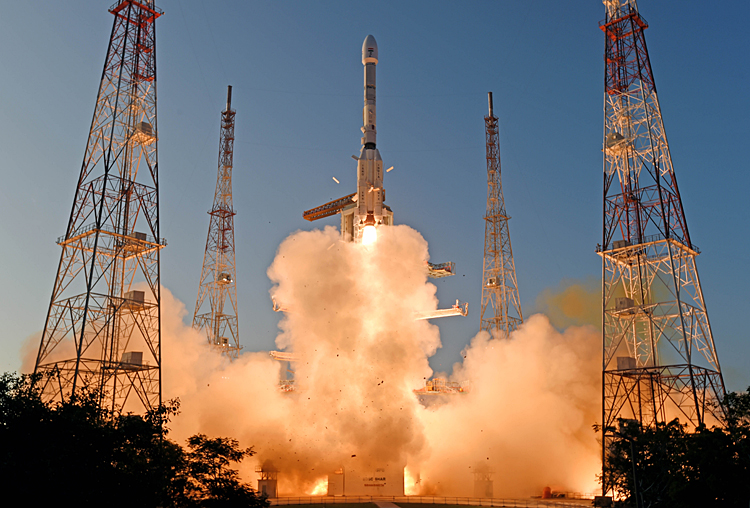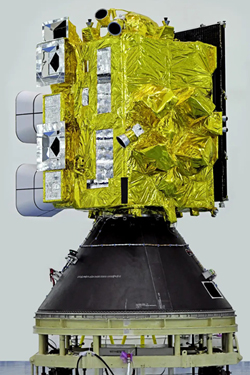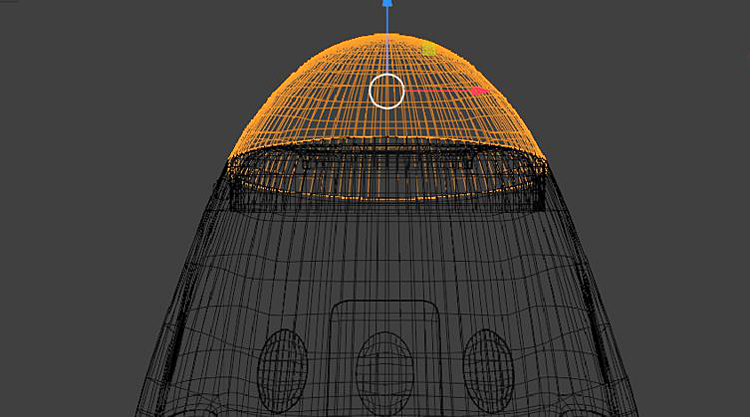INDIAN ARMED FORCES CHIEFS ON OUR RELENTLESS AND FOCUSED PUBLISHING EFFORTS

The insightful articles, inspiring narrations and analytical perspectives presented by the Editorial Team, establish an alluring connect with the reader. My compliments and best wishes to SP Guide Publications.

"Over the past 60 years, the growth of SP Guide Publications has mirrored the rising stature of Indian Navy. Its well-researched and informative magazines on Defence and Aerospace sector have served to shape an educated opinion of our military personnel, policy makers and the public alike. I wish SP's Publication team continued success, fair winds and following seas in all future endeavour!"

Since, its inception in 1964, SP Guide Publications has consistently demonstrated commitment to high-quality journalism in the aerospace and defence sectors, earning a well-deserved reputation as Asia's largest media house in this domain. I wish SP Guide Publications continued success in its pursuit of excellence.
- Operation Sindoor: Resolute yet Restrained
- India’s Operation Sindoor Sends a Clear Message to Terror and the World – ‘ZERO TOLERANCE’
- Japan and India set forth a defence cooperation consultancy framework, talks on tank and jet engines
- Terrorist Attack in Pahalgam in Kashmir: Unfolding a long surgical war against PAK
- Lt General Pratik Sharma takes over Command of Indian Army's Northern Command
INSAT-3DS Launched – More Following
India's space endeavors see success with the INSAT-3DS mission, alongside ambitious plans from ISRO and the emergence of new space trends in 2024
 |
The Author is Former Director General of Information Systems and A Special Forces Veteran, Indian Army |

The GSLV-F14/INSAT-3DS mission of the Indian Space Research Organisation (ISRO) was successfully launched on February 17, 2024, from the Satish Dhawan Space Centre (SHAR), Sriharikota, to place the INSAT-3DS meteorological satellite into the Geosynchronous Transfer Orbit (GTO). Union Minister of State (MoS) Jitendra Singh tweeted: "Celebrating the launch of INSAT 3DS, the latest generation Climate/Weather satellite. Proud to be associated with the Department of Space at a time when Team ISRO continues to accomplish one success after the other, with personal patronage from Prime Minister Narendra Modi."
INSAT-3DS will occupy a geostationary orbit at an altitude of about 35,786 km, positioned at 82 degrees East longitude

The INSAT-3DS mission is part of the Indian National Satellite System (INSAT) series revolutionising India's communication sector since launch of INSAT-1B in 1983. INSAT-3DS will occupy a geostationary orbit at an altitude of about 35,786 km, positioned at 82 degrees East longitude. Equipped with advanced meteorological instruments, including a six-channel Imager and an Infrared Sounder, which are pivotal for monitoring weather patterns, detecting cyclones, and aiding communication during natural calamities, it will significantly contribute to India's meteorological imaging and data relay capabilities. It will provide continuity of services to existing operational INSAT-3D and INSAT-3DR for enhanced meteorological observations, monitoring land and ocean surfaces for weather forecasting and disaster warning, as well as provide Satellite aided Research and Rescue services (SAR).
On February 8, 2024, the Indian National Space Promotion and Authorisation Centre (IN-SPACe), announced that between January 2024 and March 2025, the Spaceport Satish Dhawan Space Centre (SDSC) would cater to 30 rocket launch missions. Of the 30 launches, 14 cater to the indigenous commercial sector and the balance is user-funded, scientific missions or technology test launches. Seven launches are by ISRO's commercial arm New Space India Limited (NSIL), including two PSLVs being built by an industry consortium. Multiple rocket launches by private firms Skyroot and Agnikul are also expected in the specified timeframe.
ISRO is experimenting with radioisotopes to charge its robotic missions to the Moon, Mars and beyond
On February 1, 2024, ISRO Chairman S. Somanath inaugurating the 14th international conference on high energy materials and exhibits (HEMCE) 2024, organised by the High Energy Materials Society of India, stressed the need for developing "greener" high energy materials that have lesser impact on the environment. He also called for improved modeling methods to reduce dependency on exhaustive testing and emphasised the necessity of process automation in high-energy systems to enhance productivity and safety.
Concurrently, news reports of February 4, 2024, indicate that ISRO is experimenting with radioisotopes to charge its robotic missions to the Moon, Mars and beyond. The Radioisotope Thermoelectric Generator (RTG) generates electricity from the heat of a decaying radioactive substance, in this case, Plutonium-238 which emits steady heat due to its natural radioactive decay. Its continuous radiation of heat, often lasting decades, made it the material of choice for producing electrical power onboard several deep-space missions of the erstwhile USSR and the US.
NASA employed Plutonium-238 to produce electricity for a wide variety of spacecraft and hardware, from the science experiments deployed on the Moon, Mars rover and the Voyager spacecrafts at the edge of the solar system. ISRO used Plutonium-238 to keep the instruments and sensors going during the Chandrayaan-3 mission, inside a scaled-down version of the RTG known as the radioisotope heating unit (RHU). RHUs and RTGs feature rugged, heat-resistant casings to safely contain the radioisotope in case of a launch or re-entry vehicle failure.
Astroborne Aerospace is establishing Asia's first private 'Astronaut Training Facility' and developing India's inaugural six-seater commercial space module 'Airawat'
With the cost of launching one kilogram payload into space at $10,000 and solar panels becoming ineffective during deep space missions, the role of RHUs (each weighing only 40 grams) is critical when ISRO plans to put a lander on Mars, or for exploration of Venus.

Interestingly, Mumbai-based space startup 'Astroborne Aerospace' is establishing Asia's first private 'Astronaut Training Facility'. The company envisions the facility, operational within 18 to 24 months if land acquisition succeeds, to cater to private astronauts, government personnel, and space enthusiasts. The astronaut training programme is planned for 30 days, commercial astronaut training more extensive, with government astronaut training extending further. The company also aims to address the high demand for astronaut training in Asia.
Additionally, Astroborne Aerospace is pioneering development of India's inaugural six-seater commercial space module 'Airawat' designed for suborbital space tourism missions; aimed to altitudes of up to 400 km, providing a thrilling glimpse into the realm of space exploration.
China's Tiangong Space Station cost $8.5 billion for building and safe operation while ISS has a price tag of $150 billion
In terms of space stations, China is the only country with its own "self-built" Tiangong Space Station. The International Space Station (ISS) is a collaborative effort between a dozen countries and will be decommissioned by 2030. For the Bhartiya Antriksh Station (BAS) to be launched by 2030 to help establish a microgravity laboratory for research in physics, materials science, and life sciences, diplomacy will be required for collaboration and managing geopolitical implications. China's Tiangong Space Station cost $8.5 billion for building and safe operation while ISS has a price tag of $150 billion. India will need an annual allocation of 500 crore for the BAS project over the next decade. Budget 2024 has allocated 13,042 crores ($1.5 billion) to help prepare for the Gaganyaan mission and the BAS.
Development tests of BAS modules are expected to start in 2025. By 2028, ISRO will launch the first unit of robotic BAS (8 ton mass) using present rockets, placing it in Low Earth Orbit (LEO). ISRO will send space capsule there to dock on BAS; to transfer experiments using robotic arms and return the completed experiments to the crew module for sending back to the earth. By 2035 ISRO will build more BAS elements, making it fully functional.
India will need an annual allocation of 500 crore for the BAS project over the next decade. Budget 2024 has allocated 13,042 crores ($1.5 billion) to help prepare for the Gaganyaan mission and the BAS
On February 16, 2024, ISRO announced successfully bringing down the Cartosat-2 high-resolution imaging satellites, launched on January 10, 2007, from space to the Earth's atmosphere; reducing collision risks and ensured safe end-of-life disposal. On February 20, 2024, ISRO announced that India's first dedicated Space Astronomy Observatory 'AstroSat' has enabled an international team of scientists to unravel the mysteries surrounding the X-ray binary system named MAXI J182+070, which hosts a black hole.
Significantly, US startup 'Akbedo' is launching a satellite by 2025, which is capable of zooming on anyone or license plates from just 160 km from the earth's surface. Albedo claims the satellite will not have facial recognition and has signed two separate million dollar contracts with the US Air Force and the National Air and Space intelligence Centre to help the government monitor potential threats to US national security. Given the right focus, India must also develop such capability.





